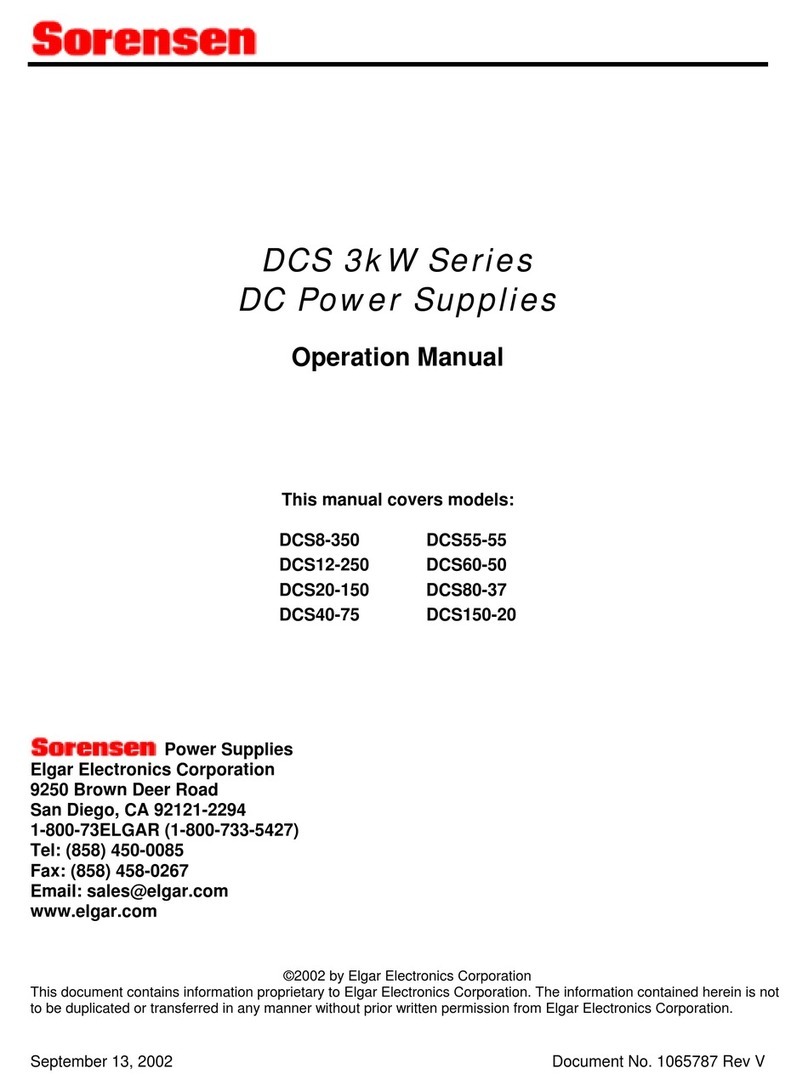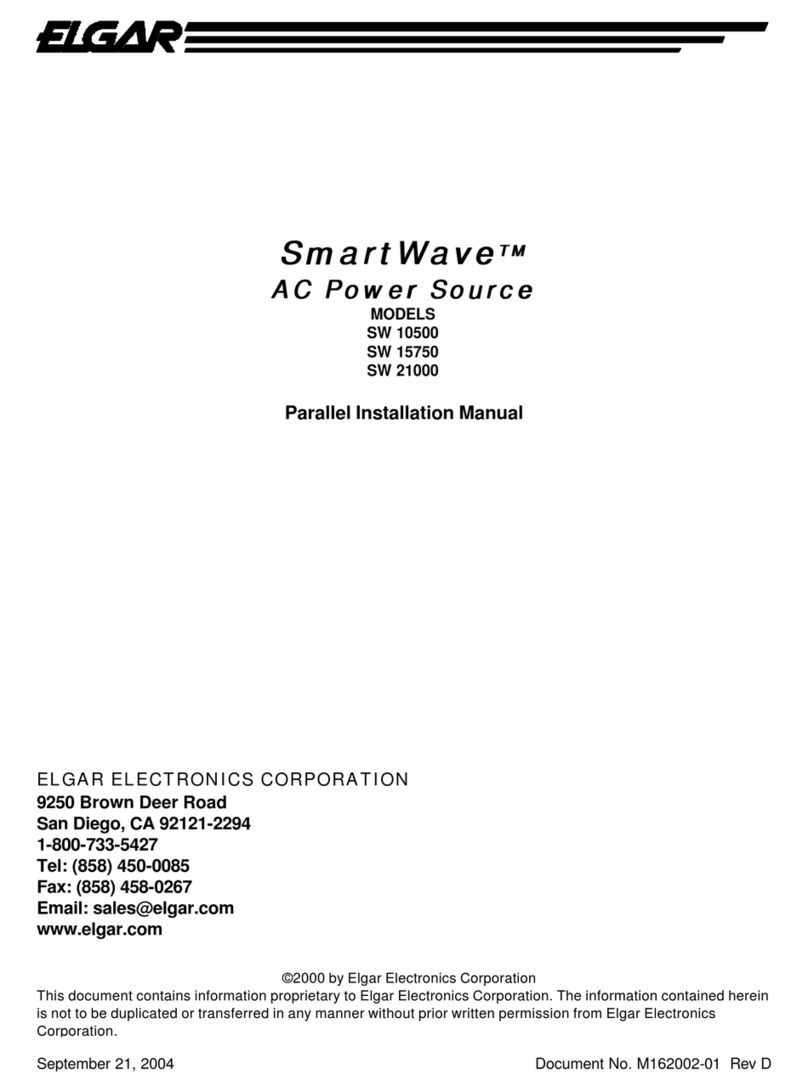
M520086-01 ii
Safety Notice
Before applying power to the system, verify that the unit is configured properly for the user's
particular application.
The 3300 series of power supplies is intended for rack mounted application only. Use of the
power supplies outside of a rack mount enclosure will expose the user to high voltage and/or
high current sources. Extreme caution must be used under these circumstances.
The analog control inputs (connectors J1 and J2) on the rear panel are referenced to the
negative output of the power supply. Grounding the positive output of the power supply or
biasing the output of the supply above chassis potential will cause these inputs (along with the
output of the supply) to have a potentially hazardous offset voltage. Exercise caution under
these conditions. Under no circumstances should the output of the supply be biased more than
500 volts from chassis potential.
Installation and service must be performed only by properly trained and qualified
personnel who are aware of dealing with attendant hazards. This includes simple tasks
such as fuse verification.
Ensure that the AC power line ground is connected properly to the unit input connector
or chassis. Similarly, other power ground lines including those to application
maintenance equipment must be grounded properly for both personnel and equipment
safety.
Always ensure that facility AC input power is de-energized prior to connecting or disconnecting
the input/output power cables.
Warning: Lethal voltages may be present inside the power supply even when the AC input
voltage is disconnected. Only properly trained and qualified personnel should
remove covers and access the inside of the power supply.
During normal operation, the operator does not have access to hazardous voltages within the
chassis. However, depending on the user's application configuration, HIGH VOLTAGES
HAZARDOUS TO HUMAN SAFETY may be generated normally on the output terminals.
Ensure that the output power lines are labeled properly as to the safety hazards and that any
inadvertent contact with hazardous voltages is eliminated.
Due to filtering, the unit has high leakage current to the chassis. Therefore, it is essential to
operate this unit with a safety ground.
This unit is designed to be permanently connected to the power source and as such must have
a readily accessible disconnect device incorporated in the fixed wiring.
After the unit has been operating for some time, the metal near the rear of the unit may be hot
enough to cause injury. Let the unit cool before handling.
These operating instructions form an integral part of the equipment and must be available to the
operating personnel at all times. All the safety instructions and advice notes are to be followed.
Neither Power Ten nor any of the subsidiary sales organizations can accept responsibility for
personal, material or consequential injury, loss or damage that results from improper use of the
equipment and accessories.































